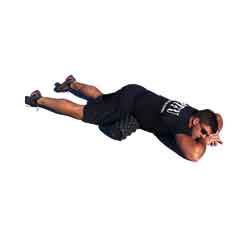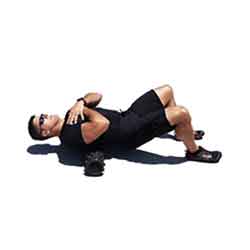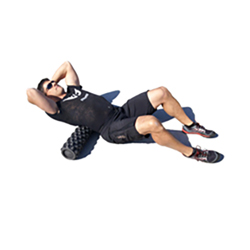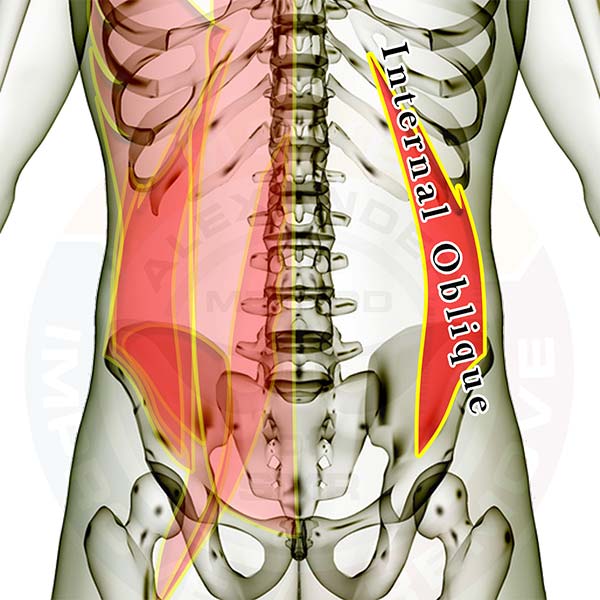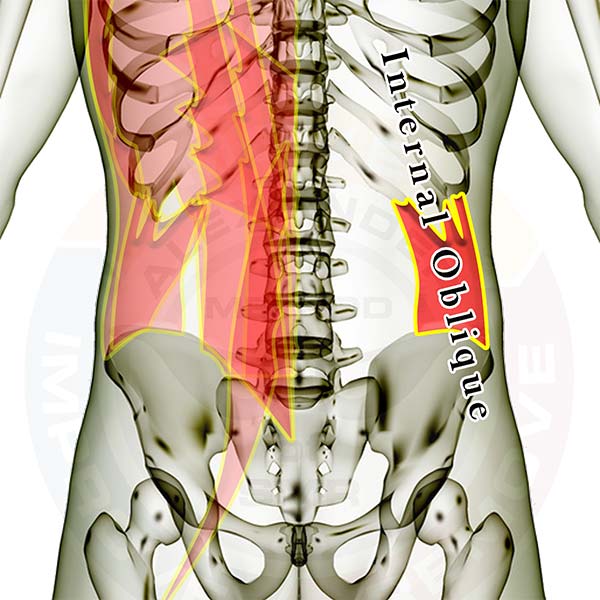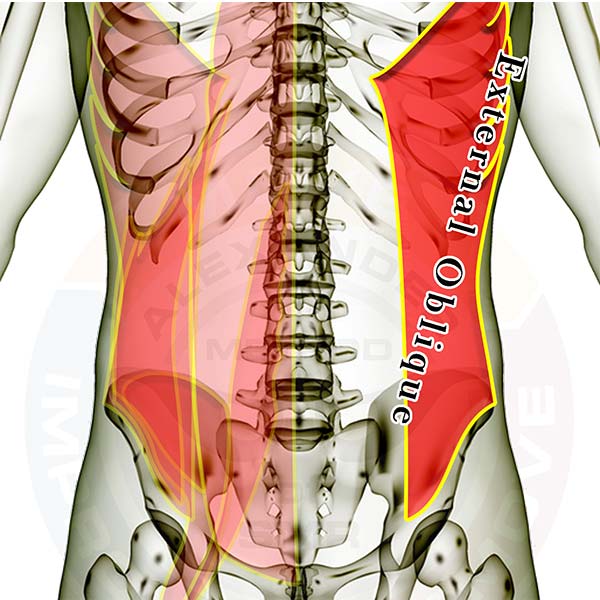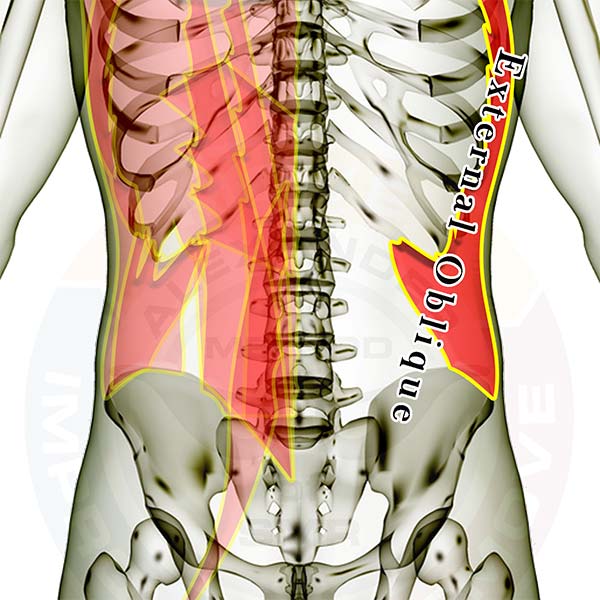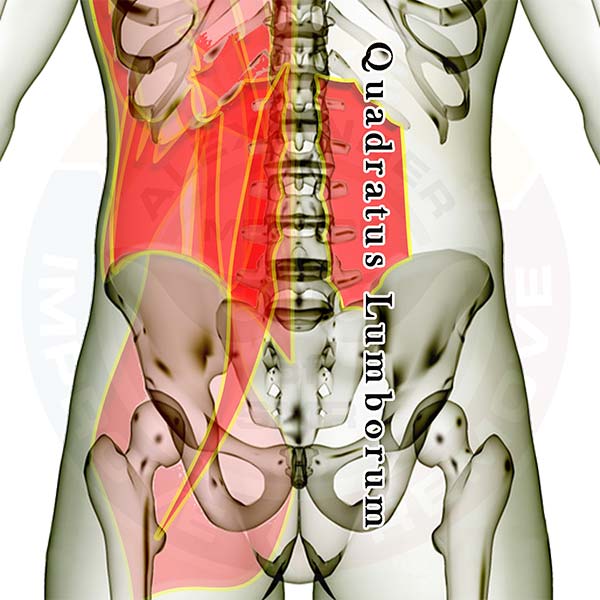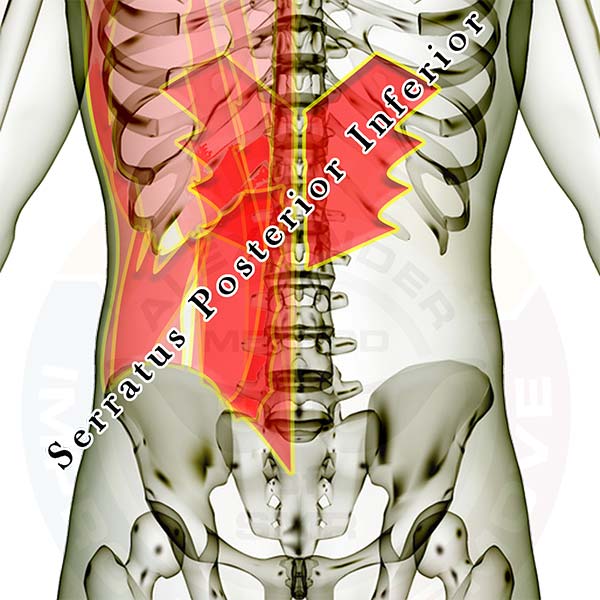
Pictured above is the serratus posterior inferior (SPI). It is an important muscle to address because it tends to be tight and limit your ability to draw in a deep breath.
It is commonly overstretched and lacking proper mobility in persons with poor posture due to excessive rounding of the middle and lower back. 80% of all adults over 18 years of age have some form of back pain. If you aren't checking the SPI for excessive stiffness you are missing one of the most significant links to proper back function.
The muscles on the left are layered, showing how some of the muscles are covered by the others. All of the muscles are see-through so that you can appreciate the location and size of each muscle relative to the others.
Click here for a list of all the muscles.
Individual hip, lower back & thigh muscles you might be interested in: (any inactive links will be live soon)
The following muscle attaches across the middle & lower back to the bottom four ribs and the last two thoracic vertebrae and the top two lumbar vertebrae:
The following muscles attach across the hip & lower back, or to the hip from above (the spine and/or ribs) or below (the thigh).
Click the appropriate link for your interest.
Click here to see the hip flexors as a muscle group.
Click here to see the adductors as a group.
Muscle that crosses the hip/lower back joint and crosses the hip/thigh joint. (attaches to the spine and the femur)
Muscles that attach to the hip and the spine and/or ribs
- Rectus Abdominus
- External Abdominal Oblique
- Internal Abdominal Oblique
- Transverse Abdominus
- Latissimus Dorsi
- Iliocostalis Lumborum
- Longissimus Thoracis
- Quadratus Lumborum
- Multifidi
Muscles that attach to the hip and the thigh bone (femur)
- Iliacus
- Adductor Magnus
- Adductor Longus
- Adductor Brevis
- Pectineus
- Gluteus Maximus
- Gluteus Medius
- Gluteus Minimus
- Piriformis
- Superior Gemellus
- Obturator Internus
- Inferior Gemellus
- Obturator Externus
- Quadratus Femoris
Good luck working out those tight knots.
If you have any questions, please post a comment. We try to respond within 24 hours.
We're here to help you get more out of your training!

